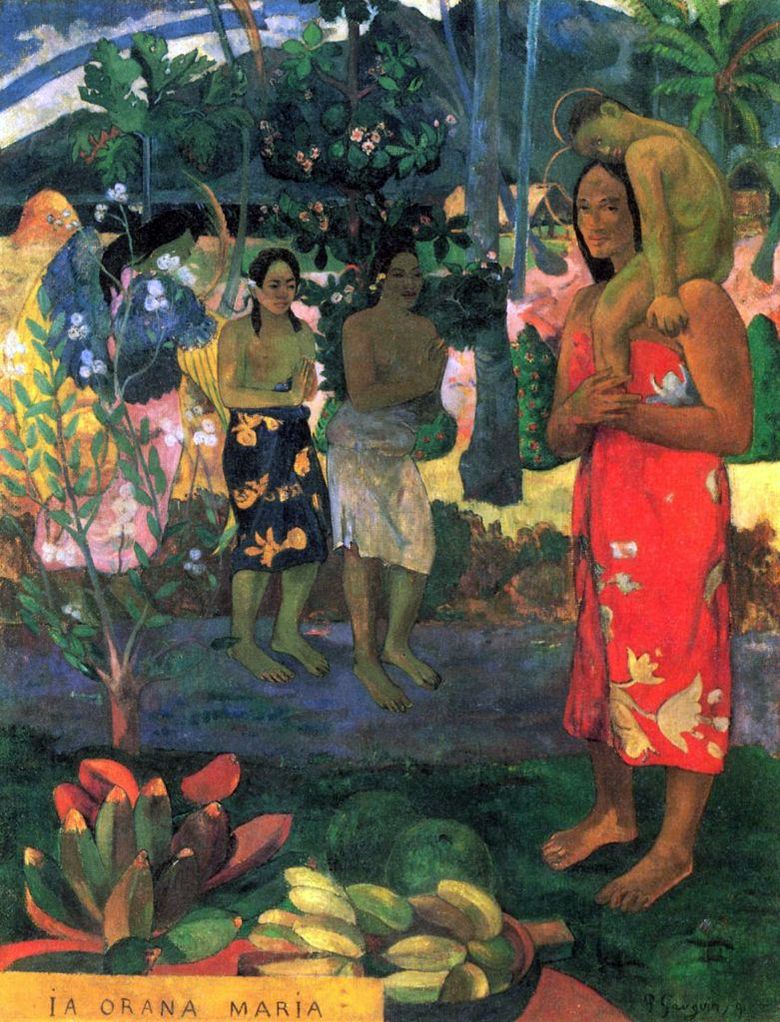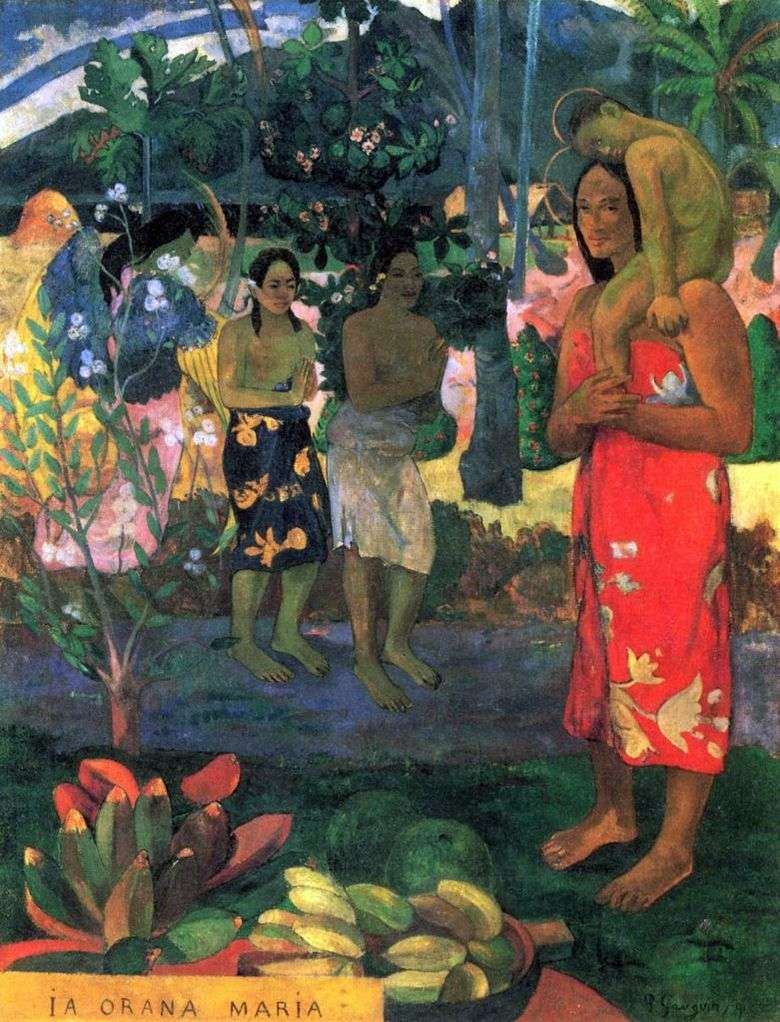
In this work, too, the influence of visits to Tahiti is felt. In the picture, the Christian figures of the Virgin Mary and Jesus are transformed into a Tahitian mother and child.
Two other women aside, like angels, worship the mother of the child. “La Orana Maria” was well received by spectators and critics.
 Oran Maria (We greet you, Maria) by Paul Gauguin
Oran Maria (We greet you, Maria) by Paul Gauguin La Orana Maria – Paul Gauguin
La Orana Maria – Paul Gauguin A Wonderful Spring (Sweet Dreams) by Paul Gauguin
A Wonderful Spring (Sweet Dreams) by Paul Gauguin Child (Christmas) by Paul Gauguin
Child (Christmas) by Paul Gauguin La Orana Maria – Paul Gauguin
La Orana Maria – Paul Gauguin What’s new? (Two Tahitians) by Paul Gauguin
What’s new? (Two Tahitians) by Paul Gauguin When Will You Marry by Paul Gauguin
When Will You Marry by Paul Gauguin Death. Landscape with peacocks by Paul Gauguin
Death. Landscape with peacocks by Paul Gauguin